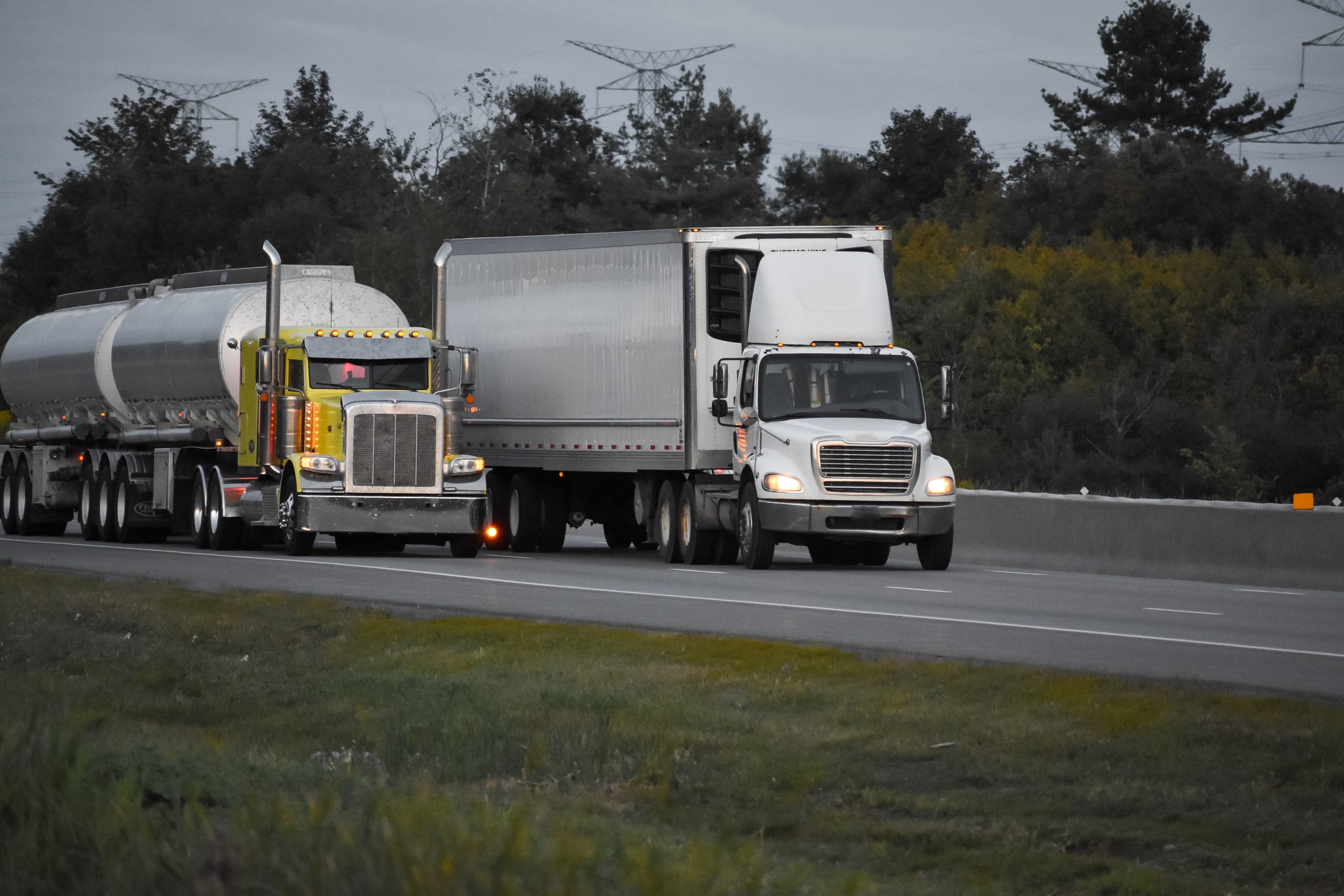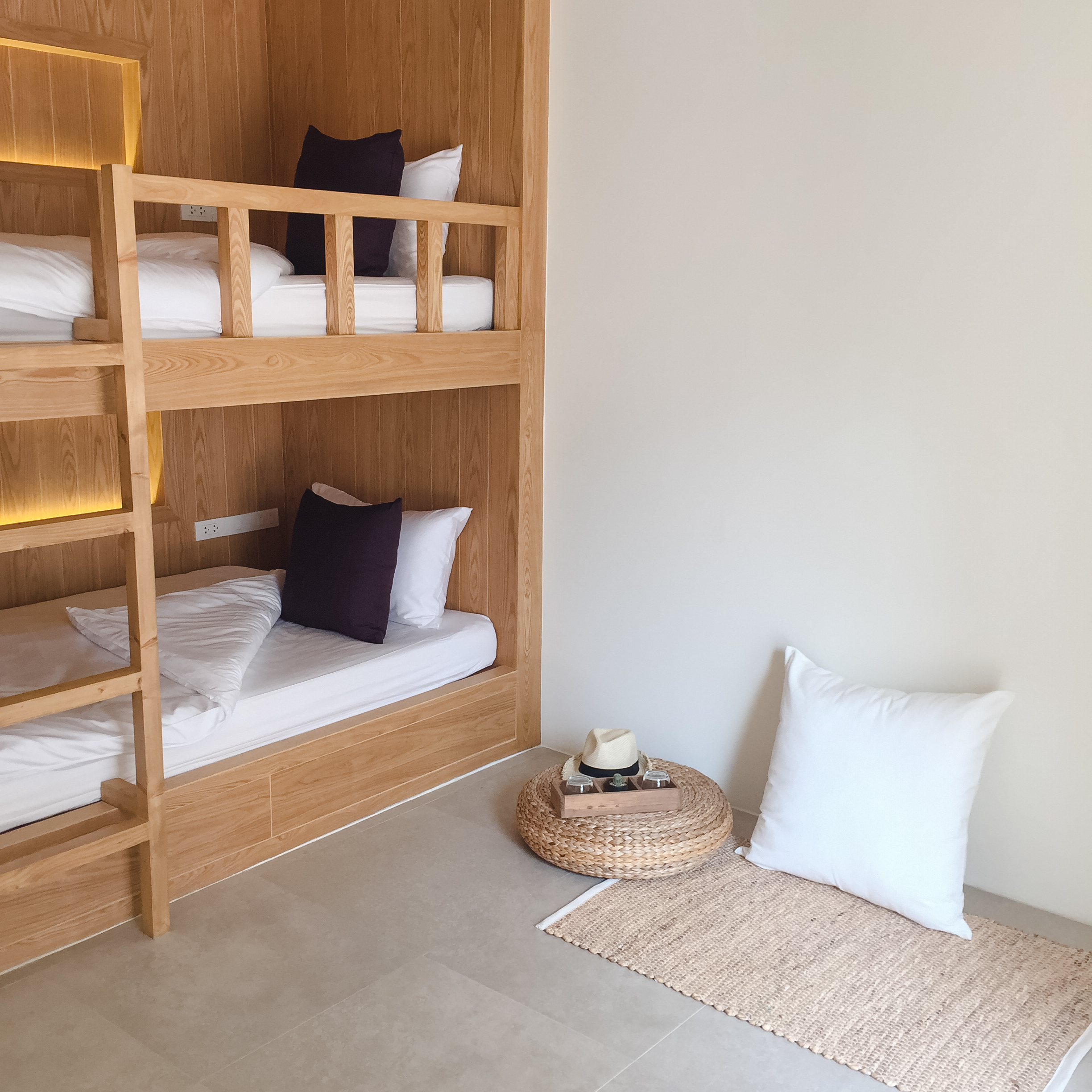Case-Raj Quarry Works [2020] 117 taxmann.com 423 (AAR – GUJARAT)
1. Facts:
Applicant is carrying out mining activity on a plot of land leased from the government of Gujarat. The applicant is quarrying “BLACK TRAP” products used for concrete mixing and sells it to the customers. BLACKTRAP material attracts GST at 5% under Heading 2517 in Schedule-I. The said lease is operative for 10 years from 19-6-2010 to 18-6-2020. The applicant lease holder as per the terms and condition is required to pay Rent of Rs. 2,62,147/- per year or Royalty @ Rs. 250/- per Metric Ton, whichever is higher to the Govt. Of Gujarat.
2. Query:
a) What is the classification of service provided in accordance with Notification No. 11/2017-CT (Rate) dated 28-6-2017 read with annexure attached to it, issued by the State Government to M/s Raj Quarry Works, for which royalty is being paid. Whether said service can be classified under Tariff Heading 9973, specifically under 997337 as Licensing services for the right to use minerals including its exploration and evaluation or as any other service?
b) What is rate of GST on given services provided by State of Gujarat to M/s Raj Quarry Works for which Royalty is being paid?
c) Whether services provided by the State Government is governed by applicability of Notification No 13/2017-CT(Rate), dated 28-6-2017 under entry number 5 and whether M/s Raj Quarry Works is taxable person in this case to discharge GST under reverse charge mechanism or whether given service is covered by exclusion clause number (1) of entry no 5 and State Government is liable to discharge GST on same?
3. Observation:
a) HSN Applicable for mining services: The nature of service is covered under the Service Accounting Code 997337 – Licensing services for the right to use minerals including its exploration and evaluation. The Government provides service of licensing services for the right to use minerals after its exploration and evaluation to applicant and applicant has to pay a consideration in the form of rent/royalty to the Government for the same. Payment of rent/royalty is for license given to extract minerals and the amount of rent/royalty paid is based on the quantum of mineral extracted. Hence it is covered under Service Accounting Code 997337 – Licensing services for the right to use minerals including its exploration and evaluation, as it is a license to extract mineral ore and also the right to use such minerals extracted.
b) Applicable Tax Rate on Amount paid towards Royalty-
Reference-to-the-Rate-Chart
The aforesaid description of service received by the applicant has subsequently been classified against item no. ‘vii’ [From 13-10-2017 to 24-1-2018] and item no. ‘viii’ from 25-1-2018 onwards. The rate prescribed in the relevant notification against aforesaid item is ‘same rate of Central tax as applicable on supply of like goods involving transfer of title in goods’ till 31-12-2018 and 9% thereafter. It was also observed that GST rate so prescribed at Sl. No. 17(vi) or at clause (vii) or (viii) after amendment was not implementable due to the absence of any underlying goods.
- Reference to Agenda of 31st GST Council Meeting when new rate at 9% was introduced from the earlier one –AAR then referred to the Agenda to 31st GST Council Minutes which provided as follows:
Heading 9973 of scheme of classification of services under GST includes “Group 99733: the licensing services for the right to use intellectual property and similar products”. However, the rate notification No. 11/2017-C.T. (R), dated 28-6-2017, prescribes rate only for transfer or permitting the use or enjoyment of Intellectual Property Rights (IPR). No rate has been prescribed for transfer of intellectual property and similar products other than IPR. IPR, as held in several decisions of the Tribunal and the Courts, refers to rights in intellectual property protected by the relevant IPR law in force. Intellectual property not protected by IPR law in force cannot be termed as IPR.
2. The residuary entry for the Heading 9973, i.e. entry Sl. No. 17(viii) prescribes GST rate as “same rate of Central Tax as on supply of like goods involving transfer of title in goods”. However, the intellectual property does not have underlying goods and thus the prescribed rate does not apply to transfer of intellectual property and similar products other than IPR.
- Conclusion by AAR- AAR on examining recommendation of the 31st GST Council observed that amendment of Entry Sl. No. 17(viii) was approved merely to clarify GST rate applicable to the right to use Intellectual Property and similar products other than IPR which are covered under Group 99733. The impugned service received by the applicant was appropriately covered under description ‘Licensing services for the right to use minerals including its exploration and evaluation’ which is classifiable under SAC 9973 37 under Group 99733. AAR held that as per agenda to the GST Council Meeting, it was pretty clear that for Licensing services for the right to use intellectual property and similar products other than IPR, GST Council carved out a new entry No. (viii) with the Service description “Leasing or rental services, with or without operator, other than (i), (ii), (iii), (iv), (v), (vi), (vii) and (viia) above” with rate of tax as 18%.
The rate of GST applicable on lease of goods may have been prescribed as the rate of GST applicable to supply of like goods involving transfer of title over the goods but the rate of GST prescribed for lease of goods can’t be made applicable for leasing of mining area conferring the right to extract and appropriate the minerals. The lease by Government not being a lease of any goods, conditional rate of tax applicable to sale of like goods cannot be imported for prescribing the rate of GST applicable to leasing of mining area. Therefore, in view of above discussion of GST Council it was held that amendments have been carried out vide the aforesaid notification No. 27/2018- CT (Rate) Dated 31-12-2018 to clarify the legislative intent as well as to resolve the unintended interpretations. It is well settled that the legislative intent cannot be defeated by adopting interpretations which is clearly against such interpretations.
- Reference to the Apex Court Decision- AAR relied on decision of Hon’ble Supreme Court of India in the case of W.P.I.L. Ltd. v. Commissioner of Central Excise, Meerut, U.P. [2005 (181) E.L.T. 359 (S.C.)] wherein a ‘3’ Judges Bench of the Hon’ble Supreme Court while interpreting applicability of exemption notifications have observed in Paras 15 and 16 as follows :
“15. The Learned Counsel for the appellant is also right in relying upon a decision of this Court in Collector of Central Excise, Shillong v. Wood Craft Products Ltd. [(1995) 3 SCC 454]. In that case, this Court held that a clarificatory notification would take effect retrospectively. Such a notification merely clarified the position and makes explicit what was implicit. Clarificatory notifications have been issued to end the dispute between the parties.
16. In view of the consistent policy of the Government of exempting parts of power driven pumps utilized by the factory within the factory premises, it could not be said that while issuing Notification No. 46/94 of March 1, 1994, the exemption in respect of said item which was operative was either withdrawn or revoked. The action was taken only with a view to rescinding several notifications and by issuing a composite notification. The policy remained as it was and in view of demand being made by the Department, a representation was made by the industries and on being satisfied, the Central Government issued a clarificatory Notification No. 95/94 on April 25, 1994. It was not a new notification granting exemption for the first time in respect of parts of power driven pumps to be used in the factory tor manufacture of pumps but clarified the position and made the position explicit which was implicit.
- Amendment to 17(viii) held to be clarificatory and therefore retrospective- The ratio of the aforesaid decision of the Hon’ble Supreme Court of India was held to be squarely applicable to the instant case in as much as the amendment of the Notification No. 11/2017-( Rate)- Central Tax dated 28-6-2017 vide Notification No. 27/2018 (Rate)- Central Tax dated 31-12-2018 is of clarificatory notification and therefore impugned service ‘Licensing services for the right to use minerals including its exploration and evaluation’ which is classifiable under SAC 9973 37 will be covered under residual entry No. (viii) of the Notification No. 11/2017-(Rate) Central Tax dated 28-6-2017 as amended vide Notification No. 27/2018-CT (Rate) dated 31-12-2018. Since the insertion of entry (viia) and (viii) vide said amendment Notification was being nature of clarification of the GST rate in respect of “right to use Intellectual Property and similar products other than IPR”, the applicability of said residual entry (viii) would be from the date of Not. No. 11/2017-(Rate) Central Tax as the same view is held by Hon’ble Supreme Court of India. Accordingly, impugned service ‘Licensing services for the right to use minerals including its exploration and evaluation’ which is classifiable under SAC 9973 37 will be covered under residual entry No. (viii) of the Notification No. 11/2017-(Rate) Central Tax dated 28-6-2017 and would attract GST rate 18% {9% CGST+9% SGST} from the period of July, 2017 onwards.
- Reference to AAR Ruling of M/S Pioneer Partners- The applicant has referred to Advance Ruling in the case of M/s. Pioneer Partners reported in 2018 (18) GSTL 58 (AAR-GST), wherein the Haryana Authority for Advance Ruling held that “The services for the right to use minerals including its exploration and evaluation, as per Sr. No. 257 of the annexure appended to Notfn. No. 11/2017-C.T. (Rate), dated 28-6-2017 is included in Group 99733 under Heading 9973. Hence it attracts the same rate of tax as on supply of the like goods involving transfer of title in goods. The said Authority have passed their rulings without properly appreciating the consequences of amendments made vide Notification No. 27/2018-Central Tax (Rate), dated 31-12-2018. Further, as per Section 103 of the CGST Act, any Advance Ruling is binding on the Applicant who has sought it and on the concerned officer or the jurisdictional officer in respect of the Applicant. Accordingly, AARs Ruling as cited above can’t be relied upon in the present case of the Appellant.
Liability to pay tax on Reverse Charge- The transaction/service i.e. “leasing of mines” was between State Government and applicant and services were supplied by State Government to the applicant which was a business entity. The subject transaction/service being a supply was not covered under the exceptions, the applicant being the recipient of such service shall have to pay tax on the said supply under reverse charge mechanism as per Notification No. 13/2017-Central Tax (Rate), dated 28-6-2017. Hence the applicant is liable to pay GST under reverse charge mechanism
4. Held:
i) What is the classification of service provided in accordance with Notification 11/2017-CT (Rate) dated 28-6-2017 read with annexure attached to it, issued by the State Government to M/s Raj Quarry Works, for which royalty is being paid. Whether said service can be classified under Tariff Heading 9973, specifically under 997337 as Licensing services for the right to use minerals including its exploration and evaluation or as any other service?
Ans- The activity undertaken by the applicant is classifiable under Heading 9973 (Leasing or rental services, with or without operator), as mentioned in the annexure at Serial No. 257 (Licensing services for the right to use minerals including its exploration and evaluation) sub-heading 997337 of Notification Number 11/2017-C.T. (Rate), dated 28-6-2017
ii) What is rate of GST on given services provided by State of Gujarat to M/s Raj Quarry Works for which Royalty is being paid?
Ans. The activity undertaken by the applicant attracts 18% GST (9% CGST+ 9% SGST).
iii) Whether services provided by the State Government is governed by applicability of Notification No 13/2017-CT(Rate), dated 28-6-2017 under entry number 5 and whether M/s Raj Quarry Works is taxable person in this case to discharge GST under reverse charge mechanism or whether given service is covered by exclusion clause number (1) of entry no 5 and State Government is liable to discharge GST on same?
Ans. The applicant is not covered under exclusion clause 1 of Sr. No. 5 of the Notification. Therefore, applicant is liable to discharge tax liability under reverse charge mechanism vide Notification No. 13/2017-C.T. (Rate), dated 28-6-2017 (as amended from time to time) of the CGST Act, 2017.
5. Comment
The decision holds amendment to the entry as a retrospective amendment (even though entry has been given a prospective effect in the rate notification amendment) by referring to the decision of Hon’ble Apex Court given totally in a different context, ignoring the rules laid down for interpretation of a retrospective amendment, AAR empowering itself for treating amendment as a retrospective amendment and last but not the least holding other AAR as not having “passed their rulings without properly appreciating the consequences of amendments made vide Notification No. 27/2018-Central Tax (Rate), dated 31-12-2018”. The reason why decision needs reconsideration
a) It has to be first admitted that the amendment made on 31st December 2018 does not seek to explain a pre-existing legislation but seeks to modify or fasten a new liability on the assessee.
b) Amendment to the Entry 17(viii) has been brought with prospective effect by the legislature. The agenda might refer to as “clarificatory” but then it is not a clarification by Circular but a notification which has brought change to the rate notification. A Change to a rate notification cannot be held to be clarificatory and that too from a retrospective effect wherein legislature themselves have brought them from a prospective effect.
c) Clarification is always there to clarify an existing thing. If there was no entry for tax rate of 18% prior to the amendment from in the entire Entry 17 of Rate Notification 11/2017-Central Tax Rate for HSN 9973, how would have one thought of the rate and how would one have waited for the amendment that on one fine day entry of 18% would be brought. Supposedly if the amendment to Entry 17(viii) would not have come on 31st December 2018, whether a tax payer would have waited for eternity for the clarification.
d) Hon’ble Apex Court in the matter of Commr.Of Income Tax-I, New Delhi vs Vatika Township P.Ltd on 15 September, 2014 laid down landmark precedence for retrospective amendment-
- The idea behind the rule is that a current law should govern current activities. Law passed today cannot apply to the events of the past. If we do something today, we do it keeping in view the law of today and in force and not tomorrow’s backward adjustment of it. Our belief in the nature of the law is founded on the bed rock that every human being is entitled to arrange his affairs by relying on the existing law and should not find that his plans have been retrospectively upset. This principle of law is known as lex prospicit non respicit : law looks forward not backward.
Emphasis Supplied
- Thus, legislations which modified accrued rights or which impose obligations or impose new duties or attach a new disability have to be treated as prospective unless the legislative intent is clearly to give the enactment a retrospective effect; unless the legislation is for purpose of supplying an obvious omission in a former legislation or to explain a former legislation. We need not note the cornucopia of case law available on the subject because aforesaid legal position clearly emerges from the various decisions and this legal position was conceded by the counsel for the parties.
- We would also like to point out, for the sake of completeness, that where a benefit is conferred by a legislation, the rule against a retrospective construction is different. If a legislation confers a benefit on some persons but without inflicting a corresponding detriment on some other person or on the public generally, and where to confer such benefit appears to have been the legislators object, then the presumption would be that such a legislation, giving it a purposive construction, would warrant it to be given a retrospective effect.
Emphasis Supplied
- In such cases, retrospectively is attached to benefit the persons in contradistinction to the provision imposing some burden or liability where the presumption attaches towards prospectivity.
- We may note that under certain circumstances, a particular amendment can be treated as clarificatory or declaratory in nature. Such statutory provisions are labeled as “declaratory statutes”. The circumstances under which a provision can be termed as “declaratory statutes” is explained by Justice G.P. Singh[7] in the following manner:
“Declaratory statutes The presumption against retrospective operation is not applicable to declaratory statutes. As stated in CRAIES and approved by the Supreme Court : “For modern purposes a declaratory Act may be defined as an Act to remove doubts existing as to the common law, or the meaning or effect of any statute. Such Acts are usually held to be retrospective. The usual reason for passing a declaratory Act is to set aside what Parliament deems to have been a judicial error, whether in the statement of the common law or in the interpretation of statutes. Usually, if not invariably, such an Act contains a preamble, and also the word ‘declared’ as well as the word ‘enacted’. But the use of the words ‘it is declared’ is not conclusive that the Act is declaratory for these words may, at times, be used to introduced new rules of law and the Act in the latter case will only be amending the law and will not necessarily be retrospective. In determining, therefore, the nature of the Act, regard must be had to the substance rather than to the form. If a new Act is ‘to explain’ an earlier Act, it would be without object unless construed retrospective. An explanatory Act is generally passed to supply an obvious omission or to clear up doubts as to the meaning of the previous Act. It is well settled that if a statute is curative or merely declaratory of the previous law retrospective operation is generally intended. The language ‘shall be deemed always to have meant’ is declaratory, and is in plain terms retrospective. In the absence of clear words indicating that the amending Act is declaratory, it would not be so construed when the pre-amended provision was clear and unambiguous. An amending Act may be purely clarificatory to clear a meaning of a provision of the principal Act which was already implicit. A clarificatory amendment of this nature will have retrospective effect and, therefore, if the principal Act was existing law which the Constitution came into force, the amending Act also will be part of the existing law.” The above summing up is factually based on the judgments of this Court as well as English decisions.
Emphasis Supplied
- A Constitution Bench of this Court in Keshavlal Jethalal Shah v. Mohanlal Bhagwandas & Anr.[8], while considering the nature of amendment to Section 29(2) of the Bombay Rents, Hotel and Lodging House Rates Control Act as amended by Gujarat Act 18 of 1965, observed as follows:
“The amending clause does not seek to explain any pre-existing legislation which was ambiguous or defective. The power of the High Court to entertain a petition for exercising revisional juris-diction was before the amendment derived from s. 115, Code of Civil Procedure, and the legislature has by the amending Act attempted to explain the meaning of that provision. An explanatory Act is generally passed to supply an obvious omission or to clear up doubts as to the meaning of the previous Act.”
Emphasis Supplied
The judgement clearly lays down that generally
- “Law looks forward not backward”,
- Where a benefit is conferred by a legislation, the rule against a retrospective construction is different,
- In the absence of clear words indicating that the amending Act is declaratory, it would not be so construed when the pre-amended provision was clear and unambiguous.
- The amending clause does not seek to explain any pre-existing legislation which was ambiguous or defective.
Thus, in no way the amendment made by entry 27/2018-Central Tax (Rate) can be held to be clarificatory as it was not made to clarify a pre-existing legislation and sought to carve a new rate of 18% which was not there in entry no. 17 in any of its entry prior to the amendment.
e) Beneficiary Amendment was held to be retrospective in the matter of W.P.I.L. Ltd. v. Commissioner of Central Excise, Meerut, U.P. [2005 (181) E.L.T. 359 (S.C.) –
The judgement in W.P.I.L. Ltd. v. Commissioner of Central Excise, Meerut, U.P. [2005 (181) E.L.T. 359 (S.C.) was given in a beneficial amendment for the assessee as Hon’ble Apex Court in the matter of Vatika Township has held that that where a benefit is conferred by a legislation, the rule against a retrospective construction is different. In the case referred by AAR facts of the case were
The case of the appellant is that it is the manufacturer of power driven pumps and parts thereof designed for handling water. The power driven pumps as well as parts thereof which are used for manufacture of pumps have been exempted from levy of excise duty since 1978. Various notifications had been issued from time to time granting exemption to both, i.e. power driven pumps and also parts of power driven pumps which were used in the manufacture of the power driven pumps. Parts of power driven pumps which were not utilized for manufacture of power driven pumps within the factory were, however, outside the purview of exemption and they were subjected to levy of excise duty.
According to the appellant, with a view to reducing special exemption notifications and consolidating various exemption notifications, in 1994, the Government rescinded 389 notifications with effect from March 1, 1994 and re-issued a consolidated notification incorporating earlier notifications vide Notification No.46/94 dated March 1, 1994. In the said notification, power driven pumps were shown as an exempted item. Due to inadvertence, however, parts of power driven pumps used in manufacture of pumps within the factory which were all along exempted from 1978 were omitted. But there was no change in the Government policy in 1994 which was in vogue since 1978. The omission was, therefore, brought to the notice of the Government by the industries. The Government was also satisfied and amended the notification No.46/94 dated March 1, 1994 by issuing another notification No.95/94 on April 25, 1994 correcting the mistake and clarifying the position that parts of power driven pumps which were used in manufacture of power driven pumps would also be exempted. According to the appellant, the notification No.95/94 dated April 25, 1994 was thus merely clarificatory in nature and an obvious error or omission which remained while issuing notification No.46/94 on March 1, 1994 was rectified by the subsequent notification No.95/94 on April 25, 1994 and hence it was retrospective in operation. The resultant effect, according to the appellant, was that parts of power driven pumps which were to be utilized for manufacturing power driven pumps within the factory would continue to be exempted from payment of excise duty.
It can be seen from the above that it was a beneficial notification which was held to be clarificatory in nature and given a retrospective effect. Hon’ble Apex Court has held in the case of M/S Vatika Township that for the sake of completeness, where a benefit is conferred by a legislation, rule against a retrospective construction is different. If a legislation confers a benefit on some persons but without inflicting a corresponding detriment on some other person or on the public generally, and where to confer such benefit appears to have been the legislators object, then the presumption would be that such a legislation, giving it a purposive construction, would warrant it to be given a retrospective effect.
AAR has held that amendment was clarificatory and therefore retrospective in nature. Firstly, amendment to Entry 17(viii) was made prospectively by the legislature and secondly it is not a beneficial amendment but would fasten a liability on the taxpayer. Therefore, AAR has treated an amendment to be retrospective by applying an Apex Court Ruling on a beneficiary provision to the assessee wherein Hon’ble Apex Court in the matter of Vatika Township has clearly laid down that consideration in a beneficial provision amendment and detrimental provision amendment would be different.
f) AAR Rulings on Royalty- Following are the Ten judgements on Royalty which have taken a contrary view to the view now taken Gujarat AAR.There are decisionswhich have referred to the amendment made on 31st December 2018 but nowhere it has been held that the amendment is retrospective in nature.
Situation as existed post Amendment of 31st December 2018-
1. Wolkem Industries Ltd. [2019] 104 taxmann.com 418 (AAR- RAJASTHAN)– The said service is classifiable under “Licensing services for the right to use minerals including its exploration and evaluation” at Serial No. 257, Heading 9973, Group 99733, sub-heading 997337 of annexure “Scheme of classification of Services to Notification No. 11/2017-CT (Rate) dated 28.06.2017. Service undertaken by applicant falls at item (viii) of serial no. 17 of Notification No. 11/2017 (as amended from time to time) which attracts 18% GST (9% CGST+ 9% SGST). The applicant is receiving leasing/licensing services from the Government of Rajasthan hence, provisions of reverse charge mechanism are applicable under the Notification No. 13/2017-CT (Rate), dated 28.06.2017 (as amended from time to time) of the CGST Act, 2017.
2. Aravali Polyart (P.) Ltd [2019] 108 taxmann.com 373 (AAAR-RAJASTHAN)– Upheld the decision of Rajasthan AAR holding that the activity undertaken by the applicant is classifiable under Heading 9973 (Leasing or rental services, with or without operator), as mentioned in the annexure at Serial No. 257(Licensing services for the right to use minerals including its exploration and evaluation) sub heading 997337 of notification number 11/2017-CT (Rate) dated 28.06.2017 and attracts 18% GST (9% CGST+ 9% SGST)
3. Ajay Kumar Dabral, [2020] 116 taxmann.com 156 (AAR- UTTARAKHAND)– Where the Government had allotted specified areas to Garhwal Mandal Vikas Nigam (GMVN) to extract accessory minerals (sand, gravel, boulders) from the same and GMVN further allotted said work to the applicant against some consideration and GMVN is paying prescribed fee as royalty to the Government from said consideration, services rendered by GMVN to the applicant is covered under heading No 997337 under serial No. 257 of annexure appended to Notification No. 11/2017- Central Tax (Rate), dated 28-6-2017 as “Licensing services for the right to use minerals including its exploration and evaluation” and supply of said service during the period 1-7-2017 to 31-12-2018 attract GST at 5%
4. Naren Rocks and Mines (P.) Ltd. [2019] 110 taxmann.com 280 (AAR – KARNATAKA)– The royalty paid in respect of Mining Lease is a part of the consideration payable for the Licensing services for right to use minerals including exploration and evaluation falling under the Heading No. 9973, which is taxable at the rate applicable on supply of like goods involving transfer of title in goods upto 31.12.2018 and taxable at 9% CGST and 9% SGST from 01.01.2019, under the residual entries of Serial No.17 of the Notification No. 11/2017- Central Tax dated 28.06.2017 as amended by Notification No. 27/2018 – Central Tax (Rate) dated 31-12-2018.
5. NMDC Ltd-[2019] 110 taxmann.com 284 (AAR – KARNATAKA)- The royalty paid in respect of Mining Lease is a part of the consideration payable for the Licensing services for right to use minerals including exploration and evaluation falling under the Head 9973 which is taxable at the rate applicable on supply of like goods involving transfer of title in goods upto 31.12.2018 and taxable at 9% CGST and 9% SGST from 01.01.2019 onwards under the residual entries of Serial No.17 of the Notification No.11/2017-Central Tax, dated 28.06.2017.
6. PKR Projects and Engineers [2019] 112 taxmann.com 10 (AAR – ANDHRA PRADESH)–The activity undertaken by the applicant falls at item (viii) of serial No. 17 of Notification No.11/2017, which was further amended vide Notification No. 27/2018-Central Tax (Rate), dt. 31-12-2018 and attracts 18% GST (9% CGST+ 9% SGST) w.e.f. 01.01.2019.
7. Vinayak Stone Crusher-[2019] 107 taxmann.com 273 (AAR- RAJASTHAN)– The rate of GST on service provided by the State of Rajasthan to the applicant for which royalty is being paid is 18% (SGST9% +CGST9%) pursuant to amendment made after 31st December 2018.
Situation as existed prior to 31st December 2018
8. United Mining Corporation [2019] 102 taxmann.com 276 (AAR – HARYANA)– The services for the right to use minerals including its exploration and evaluation, as per Sr. No. 257 of the annexure appended to Notification No. 11/2017-CT (Rate), dated 28.06.2017 is included in group 99733 under heading 9973. Hence it attracts the same rate of tax as on supply of the like goods involving transfer of title in goods. As per Notification No. 1/2017-CT (Rate), dated 28.06.2017 under the CGST Act, 2017 and the corresponding State Tax notification under HGST Act, 2017, Schedule -I the stone boulders extracted by the applicant attract 5% GST (2.5 % CGST+ 2.5% HGST) as covered under HSN 2516 (At Sr. No. 124 of the Notification).
9. Poineer Partners [2018] 97 taxmann.com 511 (AAR- HARYANA)- The services for the right to use minerals including its exploration and evaluation, as per Sr. No. 257 of the annexure appended to notification no. 11/2017-CT (Rate), dated 28.06.2017 is included in group 99733 under heading 9973. Hence it attracts the same rate of tax as on supply of the like goods involving transfer of title in goods. As per notification no. 1/2017-CT (Rate), dated 28.06.2017 under the CGST Act, 2017 and the corresponding State Tax notification under HGST Act, 2017, Schedule -I the stone boulders extracted by the applicant attract 5% GST (2.5 % CGST+ 2.5% HGST) as covered under HSN 2516 (At Sr. No. 124 of the notification). 10. NMDC Ltd [2019] 105 taxmann.com 266 (AAR – CHHATTISGARH)–The royalty paid by M/s NMDC in respect of mining lease is classifiable under sub heading 997337 ; ‘Licensing services for the right to use minerals including its exploration and evaluation’ (covered under entry no. 17 of Notification No. 11/2017(Rate), dated 28.06.2017, attracting GST at the same rate as applicable for the supply of like goods involving transfer of title in goods, under reverse charge basis.









